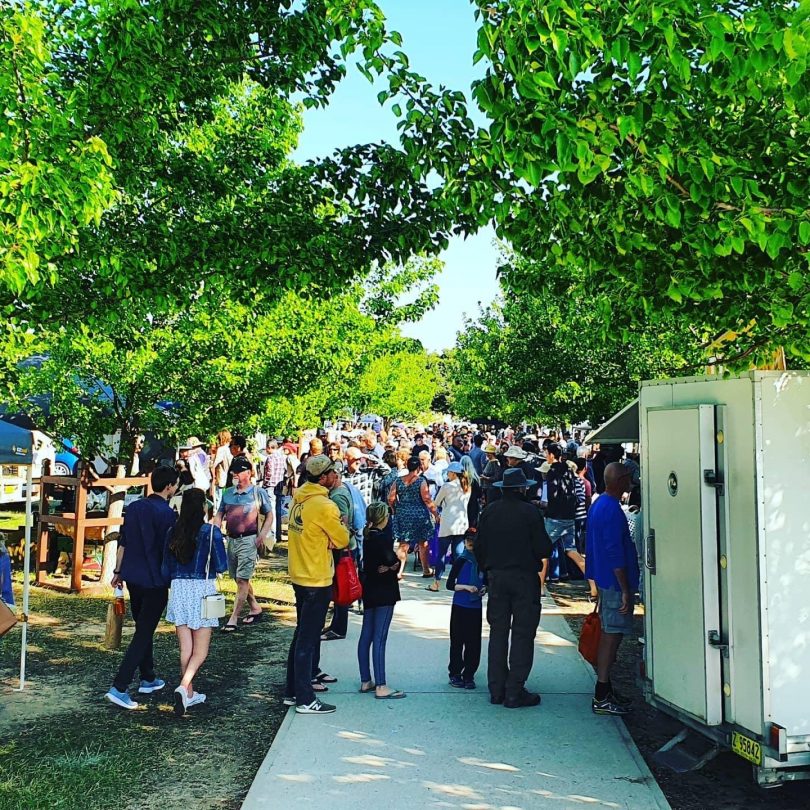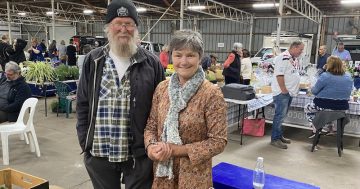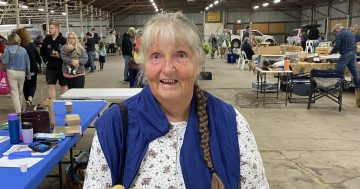
Fresh vegetables at Moruya’s SAGE Farmers Market. Photo: Supplied.
They survived the bushfires and the brunt of the COVID-19 pandemic – even running an e-market that allowed locals to order fresh produce to their door. However, Moruya’s SAGE Farmers Market is missing the usual flurry of customers this November, leaving organisers scratching their heads.
Stuart Whitelaw, one of the market’s founders, says this lull couldn’t have come at a worse time with crops aplenty after recent, welcome rain.
“For the first time in three years, growers have miles of produce,” says Stuart, referring to the end of the drought. “And we hate seeing produce go [back] home; it’s a rare thing to see at the market. The bell rings at 3 pm and usually by 4 pm the market is done and dusted – there are only a couple of cabbages rolling around.
“However, now there is produce left at 5 pm so we are trying to raise awareness about the continuing importance of supporting small-scale growers who aren’t after charity, but just want people to buy their produce and at supermarket prices.”
Tim Saffery and his partner, Tobie Patrick, transitioned from working as chefs and running a restaurant in Moruya to growing organic seasonal produce nine years ago.
Their business, Queen Street Growers, had a stall at the first market on New Year’s Day 2013 and has returned to Riverside Park every Tuesday since.

Shoppers enjoy ice-cream from Clyde River Berry Farm at SAGE Farmers Market in Moruya. Photo: Supplied.
The volunteer-run market started in a bid to help local farmers – from no further than 160km from Moruya – and beat supermarkets on freshness every week, rain, hail or shine.
Growers such as Tim and Tobie pick their produce on Tuesday morning and are the only people – no agents or resellers – allowed to stand behind the market trestle tables.
Fruit and vegetables aren’t the only produce available to buy at the market. There’s also meat, milk, ice-cream, bread, cakes and preserves. As long as it’s fresh food, it can sell.
“At the farmers market, you get 100 per cent of the value, whereas supermarkets give below 10 per cent, sometimes five per cent, which isn’t sustainable, especially because we are organic so it’s labour intensive – we do everything by hand,” says Tim.
A bad day at the market can mean produce goes on the compost pile. However, Tim and Tobie try to send leftover produce to neighbours, friends who are chefs, the independent fruit shop in Moruya, and local charities. Tim also preserves produce such as beetroot to make it last longer.

SAGE Farmers Market was busy back in September 2020. Photo: Supplied.
Tim wonders if people miss the markets because they think supermarkets are cheaper. However, he says that simply isn’t the case.
“We always beat the prices in the organic section at supermarkets and often beat them on the conventional side, too,” he says.
Organisers recognise that buying produce at the market is a different way of shopping and that it’s not a one-stop shop, which means shoppers often have to buy other products at the supermarket. However, they still think it’s the best place to buy fresh food and have started an internship program to train more people to become growers and increase what the market can put on tables.
Eurobodalla’s growing food bowl is attracting interns from across Australia, with two people travelling from Perth to take part in the market’s program, says Stuart.
Non-commercial growers are also invited to sell produce from their garden at a low fee.
Stuart says locals will lose the market if they don’t use it and had hoped the bushfires and COVID-19 would remind locals about the importance of maintaining farmers on their doorstep.
“We were able to provide food when the bushfires closed the highway and supermarkets closed their doors during the pandemic,” he says. “We need a local food system and our farmers are a very important part of our lives.”
To find out more, visit SAGE Farmers Market.










